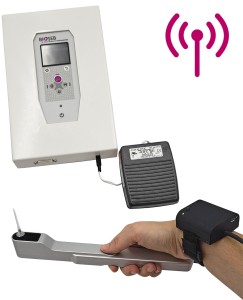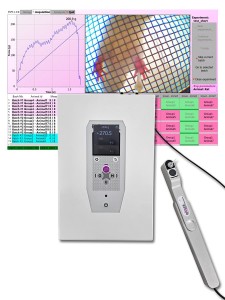Authors
F. Çelik, C. Göçmez, H. Karaman, K. Kamasak, I. Kaplan et al.
Lab
Faculty of Medicine, Dicle University, Diyarbakir, Turkey
Journal
Current Therapeutic Research
Abstract
Background
The goal of our study was to determine the therapeutic effects of thymoquinone in a dose-dependent manner in a model of neuropathic pain following an experimentally applied spinal cord injury (SCI).
Methods
Fifty female adult Wistar albino rats weighing between 220 and 260 g were included in the study and were divided into 5 groups as follows: Group S (sham), Group C (control), Group T100 (100 mg/kg thymoquinone), Group T200 (200 mg/kg thymoquinone), and Group T400 (400 mg/kg thymoquinone). To begin the experiment, SCI was applied to all groups (with the exception of the sham group) following a mechanical and heat–cold test. Two weeks later, the mechanical and heat–cold tests were repeated, and a single normal saline dose was given to the sham and control groups, whereas 3 varying doses of thymoquinone were given to the other groups. The mechanical and heat–cold tests were repeated at 30, 60, 120, and 180 minutes after receiving thymoquinone. Finally, the animals were put to death via the removal of intracardiac blood. The levels of nitric oxide, total oxidant status, total antioxidant status, paraoxonase, malondialdehyde, tumor necrosis factor-α, and interleukin-1β were determined in all of the blood samples.
Results
The withdrawal threshold and withdrawal latency values recorded from the mechanical and heat–cold allodynia measurements for all 3 thymoquinone groups were higher than that of the control group at all time points (ie, 30, 60, 120, and 180 minutes). There were no differences in these results between the 3 thymoquinone groups. The paraoxonase and total antioxidant status serum levels of all 3 thymoquinone groups were higher than those of the control group, whereas total oxidant status, nitric oxide, malondialdehyde, interleuken-1β, and tumor necrosis factor-α levels were lower in the 3 thymoquinone groups than in the control group.
Conclusions
Thymoquinone is beneficial for decreasing experimental neuropathic pain following SCI. However, increasing the dose does notchange the effect.
BIOSEB Instruments Used
Electronic Von Frey 4 (BIO-EVF4),Electronic Von Frey 5 with embedded camera (BIO-EVF5)
Source :
http://www.sciencedirect.com/science/article/pii/S0011393X13000313

 Douleur - Allodynie/Hyperalgésie Thermique
Douleur - Allodynie/Hyperalgésie Thermique Douleur - Spontanée - Déficit de Posture
Douleur - Spontanée - Déficit de Posture Douleur - Allodynie/Hyperalgésie Mécanique
Douleur - Allodynie/Hyperalgésie Mécanique Apprentissage/Mémoire - Attention - Addiction
Apprentissage/Mémoire - Attention - Addiction Physiologie & Recherche Respiratoire
Physiologie & Recherche Respiratoire




































 Douleur
Douleur Système Nerveux Central (SNC)
Système Nerveux Central (SNC)  Neurodégénérescence
Neurodégénérescence Système sensoriel
Système sensoriel Système moteur
Système moteur Troubles de l'humeur
Troubles de l'humeur Autres pathologies
Autres pathologies Système musculaire
Système musculaire Articulations
Articulations Métabolisme
Métabolisme Thématiques transversales
Thématiques transversales Congrès & Meetings
Congrès & Meetings 
